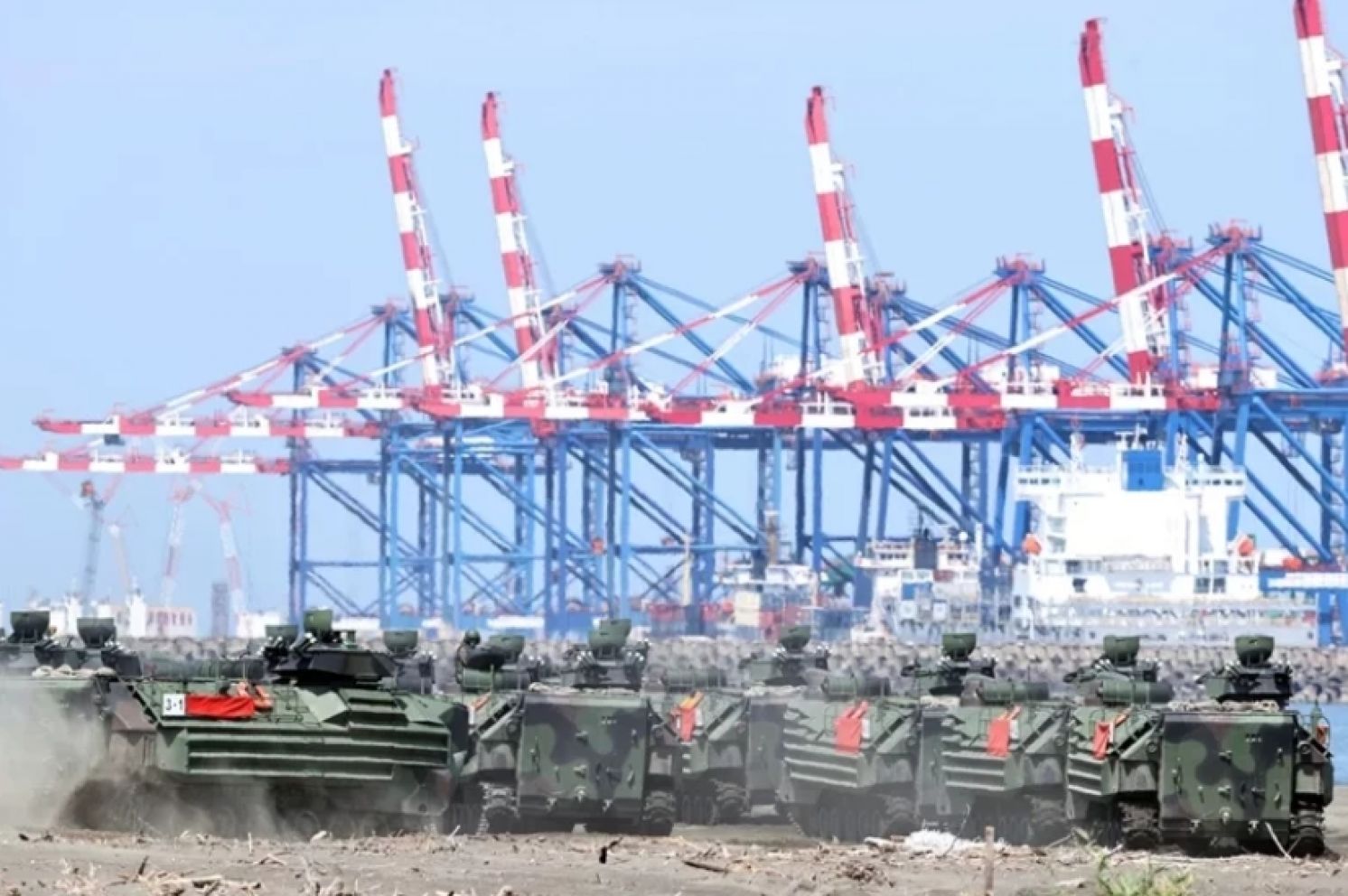
Realistic Battlefield:Concretization of Computerized Wargame
United Daily News, July 25, 2023
The Han Kuang military exercises' live-fire drills have always provided a glimpse into Taiwan's military preparedness and strategic considerations for both domestic and international observers. Even though their perspectivemay be constrained, it is a demonstration of Taiwan's readiness and resolve amidst threats. This year's exercise features a noteworthy change as it portrays the Marine Corps assuming the role of the attacking force and storming the beachfront to confront the defense forces. It created a palpable sense of "under siege" for the nation to see. What could be the rationale behind this year’s specific presentation?
In previous Han Kuang exercises, the amphibious landing drills conducted by the Marine Corps and the anti-landing operations primarily led by the defending forces were typically implemented separately. This was mainly due to the space limitation of the beach area which could not accommodate both the defensive artillery array and the attacking amphibious landing units simultaneously. The sole exception occurred during Han Kuang Exercise 33 when the anti-landing operation was executed on the beach of Penghu. In this particular scenario, the defending forces concentrated their artillery fire on one side, while the Marine Corps executed their landing from the other side after the bombardment had concluded.
For the first time, Taiwan’s military synchronized the timelines of amphibious landing and anti-landing exercises. The Marine Corps proceeded northwards to Bali, deploying the AAVP7-A1 amphibious assault vehicles as the Red Force. In the simulation, it directly engages with the defending forces in the operational area upon landing. Additionally, the attacking aircraft and vessels were prominently marked with vibrant red flags or indicators, effectively enhancing the realism and sense of being present on an actual battlefield.
Throughout the years, it is speculated that the Han Kuang military exercises conclude once the attacking forces reach the beachfront. The reason for that speculation is that Taiwan no longer has aerial and maritime advantages once the enemy lands. However, a closer examination reveals that historical exercises typically extend beyond the initial beach landing and into territorial defense. In one instance, the attacking forces simulated the enemy's airborne infiltration of the Erchong Floodway, advancing towards Taipei City, and nearly breaching its defenses. The Military Police Headquarters urgently deployed city defense to hold the bridgehead until the exercise was halted under orders. Such "thrilling" scenarios presented on computer screens have long been considered a sensitive topic within the military and are seldom disclosed to the public. Nevertheless, the current exercises seem to involve a certain level of concretization.
The live-fire drills in the Han Kuang exercises involve troops from special task forces, strategically positioned by different operational areas to demonstrate the utmost military readiness. The exercise plan includes repeated rehearsals of scenario-based maneuvers, which are ultimately presented before the public, allies, and the commander-in-chief during the formal exercises. To effectively showcase the complexity of battle situations within a limited timeframe, a significant "directorial" element comes into play, meaning the military could subjectively select how to present the exercises.
This year, Taiwan’s military has made significant efforts to create a realistic battlefield atmosphere, illustrating potential scenarios of the enemy landing on the island. The decision to adopt this approach might be influenced by the frequent military exercises performed by the People’s Liberation Army (PLA) surrounding Taiwan and the focus on "war and peace” for both the ruling and the opposition parties in anticipation of the major elections. As Taiwan implements extended military service, the military's portrayal of a sense of being "under siege” during these exercises is bound to generate considerable attention and discussion.
In recent years, Taiwan’s military has fostered close exchanges and cooperation with the U.S. military. The recent exercise concepts and presentation were likely influenced by this. Specifically, this year, the Navy has been proactivelyengaged in amphibious landing trials and hydrological data collection on various breach areas. Furthermore, after this month's exercises, similar activities are planned along the central and southern coastlines to serve as a reference for adjusting tactical deployments. These actions demonstrate a sense of urgency, possibly driven by allied partners' concerns. Given Taiwan's strategic significance in controlling the First Island Chain for the Western world, it is understandable that the United States shows a keen interest in these developments.